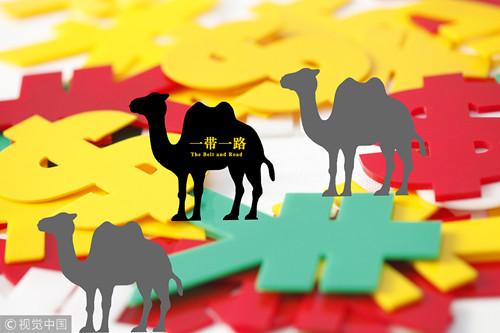Belt, Road helps balance economic development, says expert


The Belt and Road Initiative helps solve the imbalanced economic development across regions. [Photo/VCG]
The Belt and Road Initiative helps solve the problem of imbalanced economic development across regions, an expert said.
Chi Fulin, head of the China Institute for Reform and Development, said at a recent symposium held by the Chinese Economists 50 Forum that the initiative is a great opportunity for impoverished areas to further economic development.
"The initiative covers infrastructure, trade and financing exchanges with involved countries, and neighboring cities in China share great regional opportunities for export," Chi added.
The Belt and Road Initiative, or the Silk Road Economic Belt and the 21st Century Maritime Silk Road, was put forward by President Xi Jinping in 2013 to promote economic cooperation among countries and regions.
According to Zhang Xiaoqiang, former vice-chairman of the National Development and Reform Commission, China's foreign trade with Belt and Road-related economies surpassed $4 trillion between 2014 and 2017. In 2017, the figure hit $1.1 trillion, accounting for 26.5 percent of the country's total.
"Areas in the west and northeast have great potential to become China's new bases for opening-up," said Chi.
Chi explained that cities in the northeast can make good use of regional advantages and boost trade with neighboring countries like Mongolia, covering areas of infrastructure and manufacturing.
Chi added that the initiative has already become an important driving force for economic development in Shaanxi province, where outsourcing and exports to those countries increased by a factor of 5.3 in 2017, compared with 2016.
MOST POPULAR
- 1 China to give visa-free treatment to another 9 countries
- 2 China fully opens manufacturing sector to foreign investors in landmark opening up move
- 3 China's import expo attracts record-breaking participating countries, exhibitors
- 4 China's door opening even wider to foreign visitors, businesses
- 5 China revises rules to ease foreign strategic investment in listed firms
Editors' Picks
 Video:
Peru sees new port open
Video:
Peru sees new port open
 Infographic:
China's public holidays for 2025
Infographic:
China's public holidays for 2025
 Infographic:
Basic facts of APEC
Infographic:
Basic facts of APEC
 Infographic:
Wrapping up the 7th CIIE: Data recap
Infographic:
Wrapping up the 7th CIIE: Data recap



